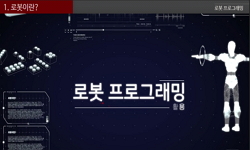본 연구는 확장된 로봇디자인의 개념이 반영된 로봇디자인 영역별 교육과 온라인 디자인 교육에 관한 문헌 고찰을 바탕으로 국내 4년제 사이버대학 디자인 관련 학과의 로봇디자인 교육 현...
http://chineseinput.net/에서 pinyin(병음)방식으로 중국어를 변환할 수 있습니다.
변환된 중국어를 복사하여 사용하시면 됩니다.
- 中文 을 입력하시려면 zhongwen을 입력하시고 space를누르시면됩니다.
- 北京 을 입력하시려면 beijing을 입력하시고 space를 누르시면 됩니다.

사이버대학 로봇디자인 교육 방향에 관한 연구 = A Study on the Direction of Robot Design Education in Cyber Universities
한글로보기https://www.riss.kr/link?id=A109321887
- 저자
- 발행기관
- 학술지명
- 권호사항
-
발행연도
2024
-
작성언어
Korean
- 주제어
-
등재정보
KCI등재
-
자료형태
학술저널
-
수록면
403-419(17쪽)
- 제공처
-
0
상세조회 -
0
다운로드
부가정보
국문 초록 (Abstract)
본 연구는 확장된 로봇디자인의 개념이 반영된 로봇디자인 영역별 교육과 온라인 디자인 교육에 관한 문헌 고찰을 바탕으로 국내 4년제 사이버대학 디자인 관련 학과의 로봇디자인 교육 현황 분석과 로봇디자인 영역별 교육 사례 분석을 통해 향후 사이버대학 로봇디자인 교육이 나아가야 할 방향을 다음과 같이 제안하였다. 1) 사이버대학의 로봇디자인 교육은 로봇의 물리적인 구조 설계 및 제어보다는 로봇의 서비스 디자인과 GUI 디자인에 중점을 두어야 한다. 이를 통해 오프라인 스튜디오 실습이 어려운 사이버대학 교육환경의 한계를 극복하고, 전통적인 오프라인 디자인 교육과의 차별화를 전략적으로 구축할 수 있다. 특히, 로봇과 타 산업의 융합을 통해 혁신적인 비즈니스 모델을 창출하는 서비스 디자인 교육과정을 개발하고, 실습 중심의 교육 방식을 도입하여 서비스 디자인 교육을 체계적으로 강화해야 한다. 2) 사이버대학의 로봇디자인 교육에서는 이미지 생성 AI 프로그램을 적극 활용하여 로봇 외형 제작에 요구되는 3D 모델링 교육 시간을 단축하여 학생들이 로봇디자인 수업에서 느끼는 초기 난이도에 대한 심리적 진입 장벽을 낮추고, 창의적 사고 및 아이디어 발상 과정에 더 많은 시간을 할애할 수 있도록 해야 한다. 3) 사이버대학의 온라인 교육 플랫폼은 로봇디자인 교육과정에서 AR/VR과 같은 첨단 기술을 신속하게 적용하여 디지털 교육 환경의 양과 질을 향상시키는 데 중점을 두어야 한다. 이를 통해 학생들이 로봇디자인 개발 과정에서 비대면 상호작용에 대한 폭넓은 이해와 경험을 바탕으로 인간-로봇 상호작용에 대한 유연하고 참신한 디자인 접근이 가능하도록 해야 한다.
다국어 초록 (Multilingual Abstract)
This study proposes future directions for robot design education in cyber universities, based on an analysis of the current state of robot design education in design-related departments at four-year cyber universities in South Korea. It is based on a ...
This study proposes future directions for robot design education in cyber universities, based on an analysis of the current state of robot design education in design-related departments at four-year cyber universities in South Korea. It is based on a review of the literature on robot design education and online design education, incorporating the expanded concept of robot design. The study suggests the following directions: 1) Robot design education at cyber universities should prioritize service design and GUI design for robots, rather than focusing on the physical structure and control of robots. This approach can help overcome the limitations of the cyber university environment, where offline studio-based practice is challenging, and strategically differentiate it from traditional offline design education. In particular, it is essential to develop a service design curriculum that fosters innovative business models through the convergence of robots with other industries, and to introduce a practice-centered approach to systematically improve service design education. 2) In cyber university robot design education, AI programs for image generation should be actively utilized to reduce the time required for 3D modeling, which is necessary for designing the robot's appearance. This can lower the initial psychological barriers that students face in robot design courses, allowing them to spend more time on creative thinking and idea generation processes. 3) The online education platforms of cyber universities should rapidly integrate advanced technologies such as AR/VR in robot design education to improve both the quantity and quality of the digital learning environment. This will enable students to approach human-robot interaction design more flexibly and creatively, based on a broad understanding and experience of non-face-to-face interactions throughout the robot design development process.
동일학술지(권/호) 다른 논문
-
- (사)한국커뮤니케이션디자인협회 커뮤니케이션디자인학회
- 박광신
- 2024
- KCI등재
-
- (사)한국커뮤니케이션디자인협회 커뮤니케이션디자인학회
- 서송이
- 2024
- KCI등재
-
상호작용 의례 사슬의 관점에서 본 가상 아이돌 팬 커뮤니티의 상호작용 분석 -'뤄톈이'(洛天依:Luo Tianyi) 팬 커뮤니티를 중심으로-
- (사)한국커뮤니케이션디자인협회 커뮤니케이션디자인학회
- 두운
- 2024
- KCI등재
-
- (사)한국커뮤니케이션디자인협회 커뮤니케이션디자인학회
- 김수빈
- 2024
- KCI등재




 KISS
KISS




